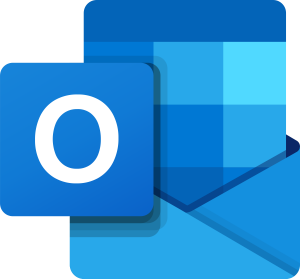Microsoft Outlook is more than just an email client. It’s a comprehensive personal information manager, integral to the Microsoft Office suite.
This article delves into Outlook’s journey, exploring its evolution, diverse features, and its impact on digital communication and organization.
In this article:
- What is Microsoft Outlook?
- The Evolution of Microsoft Outlook
- Key Features of Microsoft Outlook
- Adoption and Impact in the Business World
- Microsoft Outlook in the Era of Cloud Computing
- Future Prospects and Ongoing Developments
- References

1. What is Microsoft Outlook?
Microsoft Outlook is Microsoft’s mail client and full-featured desktop information-management application. Microsoft Outlook, which is part of the Microsoft Office suite, lets users manage their messages, appointments, contacts, tasks, and activities.
It also integrates with other Office applications at the front end and with Microsoft Exchange at the back end to enable users to collaborate using e-mail, calendar, contact lists, task lists, journals, and notes.
Outlook is a full MAPI client and interoperates with all e-mail systems that support Messaging Application Programming Interface (MAPI). Outlook can be run as a stand-alone application or as part of the Office suite.
Outlook’s advanced features include the following:
- Support for MAPI, Post Office Protocol version 3 (POP3), Internet Mail Access Protocol version 4 (IMAP4), and Hypertext Transfer Protocol (HTTP)
- A common user interface with other Office components
- AutoNameCheck, message tracking, message recall, embedded hyperlinks, and other e-mail enhancements
- Enhancements to calendar and scheduling functions to facilitate processing of meeting requests, tracking attendees, and configuring the duration of appointments
- Simplified tracking of “to do” lists using task requests, task tracking, status reports, and task categorizations
- Custom Outlook forms for creating custom collaboration applications
2. The Evolution of Microsoft Outlook
The Evolution of Microsoft Outlook
Outlook began as part of Microsoft Office 97. It has evolved significantly, incorporating internet mail standards and expanding its feature set to meet the growing needs of users in an increasingly connected world.
Outlook’s journey commenced with basic email functionalities and a simple user interface. Early versions focused on integrating email with calendar and task management. As user needs grew, Microsoft responded with updates enhancing user experience and interoperability.
Major Updates and Changes
Significant milestones include the introduction of an improved interface, advanced email organization features, and enhanced security measures. Over time, Outlook embraced internet standards like IMAP and LDAP, broadening its appeal and utility. Integration with mobile and cloud services marked another major leap, reflecting the shift towards flexible, on-the-go accessibility.
This exploration of Outlook’s core functions and its evolutionary journey highlights its transition from a simple email client to a comprehensive tool for personal information management, adapting to changes in technology and user expectations.
3. Key Features of Microsoft Outlook
Email Management
Outlook excels in email management, offering sophisticated tools like folder organization, advanced search, and robust spam filtering. Its focused inbox separates important emails, enhancing productivity.
Calendar and Scheduling
The integrated calendar in Outlook facilitates meeting scheduling, reminders, and event management, syncing across devices for seamless access.
Task and Contact Management
Outlook’s task management feature allows users to create, track, and prioritize tasks, while its contact management organizes and stores contact information efficiently.
Integration with Other Applications
Outlook seamlessly integrates with other Microsoft Office applications, enhancing productivity and ensuring a unified user experience.
4. Adoption and Impact in the Business World
Popularity and Adoption Curve
Outlook’s adoption in the business world has been significant. Its versatility and integration with Microsoft Office have made it a staple in corporate environments, steadily growing in popularity since its inception.
Role in Corporate Communication
In corporate communication, Outlook plays a pivotal role. It’s not just an email tool; it’s a central platform for scheduling, task management, and contact organization, integral to the daily operations of countless businesses.
This detailed overview of Outlook’s key features and its substantial impact in the business world underscores its importance as a comprehensive tool for professional communication and organization.
5. Microsoft Outlook in the Era of Cloud Computing
Outlook and Office 365
With the advent of Office 365, now Microsoft 365, Outlook embraced cloud computing. This integration enables real-time synchronization of emails, calendars, and contacts across devices, enhancing accessibility and collaboration.
Mobile and Web Versions
Outlook’s mobile and web versions epitomize flexibility. They offer the core functionalities of the desktop version, tailored for on-the-go access, ensuring users stay connected and productive regardless of their location.
6. Future Prospects and Ongoing Developments
Technological Advances
Looking ahead, Outlook is set to incorporate more AI and machine learning capabilities, aiming to automate tasks and offer predictive insights.
User Experience Enhancements
User experience is a continual focus, with improvements aimed at interface intuitiveness, customization options, and integration with emerging technologies like VR and AR.
7. References
- “Microsoft Outlook 2019 Step by Step” by Joan Lambert.
- “Office 365 For Dummies” by Rosemarie Withee and Ken Withee.
- Microsoft’s official Outlook Blog and Documentation.
- Microsoft Outlook